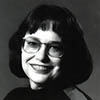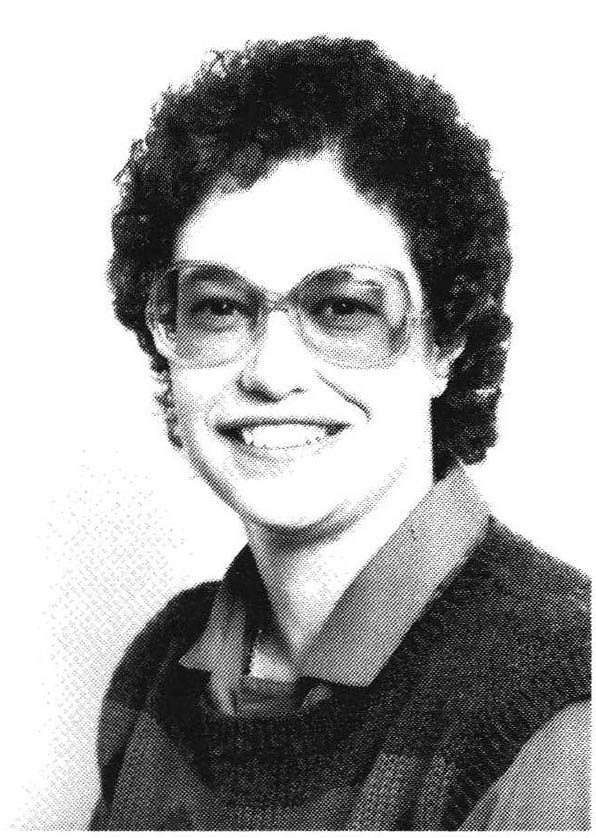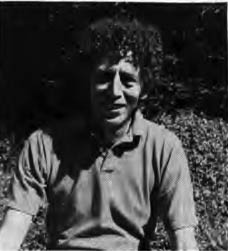Telepathic dreams can be defined as dreams which involve the transfer of information derived from other than the five senses. In common usage, dream telepathy refers to the ability to pick up knowledge about either living individuals or an objective target such as a location or painting.
When you keep a dream journal, you can compare your dreams with current events and symbols. In fact, journaling becomes crucial to this type of dreaming. To track correspondences with telepathic information, you need a recorded copy of dreams which are titled and dated for easy access and crossreferencing.
Dream lab experimentation
During the late '60's a series of dream telepathy experiments were held at the dream laboratory of the Maimonides Medical Center in Brooklyn, New York. Several people were involved in that work: Montague Ullman, Stanley Krippner, and Calvin Hall, to name a few.
Subjects were brought into the lab and hooked up to various devices, such as the EEG or electroencephalogram, to measure brain waves. Other electrodes were attached close to the eyes to measure the REMs or rapid eye movement, and some to the chin to measure muscle tension. Together, these devices would serve as indicators of different sleep states.
The subject's indicators were watched on a screen during the night by a scientist who was called the monitor. When screen data indicated that a sleep cycle was beginning, the monitor would signal another person, in an entirely different room. This person, called the agent, would start trying to "send" the target information.
Well-known art prints were used as the targets for these experiments; the rationale being that they would probably contain universal emotional appeal. Each print was chosen using random selection procedures, sealed in a manila envelope, and given to the agent who would not open the envelope until it was time for the experiment. Then he would pull out the art print and do whatever he wished to try and send the information to the dreamer.
When the equipment indicated the end of a dream period, the monitor would awaken the dreamer. The dreamer would then write down his or her dream, go back to sleep and the whole cycle would begin again.
In the morning, the dreamer would be given eight art prints, including the target picture, and asked to rank the prints one through eight as to how close he or she thought they were to the information dreamt during the night. If the target picture was rated one through four, it was considered a "hit". If five through eight, it was a "miss". All the information, including pictures and dream reports, were also sent to an independent judge or judges who went through a· similar procedure. From the results thus attained, nine out of the thirteen major studies yielded "statistically significant" results.
Setting up a personal dream telepathy experiment
One needn't go to a dream laboratory to participate in a dream telepathy experiment, however. Ever since that time, at conferences and workshops, through periodicals and among individual dreamers, people have enjoyed dreaming to an objective target and I've enjoyed facilitating each of these kinds of projects. In this way telepathic dreaming becomes both a game and an opportunity to begin practicing even more comprehensive group dreaming skills. It's one of the easiest steps that move us from viewing the dream as a private world to realizing our inherent interconnectability in the dream state. Most important, we don't have to wait for spontaneous synchronicity -we can set up the circumstances ourselves.
Only three items are needed for a telepathic dream experiment: a dreamer, a target picture and a "sender" to concentrate on the target picture.
Selecting a target picture
Pick a target picture which tells a story. Emotion is often the bonding connective to the target picture, so whereas a still snapshot of a bouquet of flowers may be lovely, the lack of action may not translate too well -that is, unless the dreamer is fascinated by flower arrangements! Thus it's also good to keep in mind the interests and preferences of the dreamer.
Keep the target simple, but not stark. Too much in the picture gives the dreamer more to grasp, but may also confuse the issue. Too little may be boring. Experiment to find the right combination. Try color as well as black and white targets.
Choose a single target. One night I chose a target picture, rejected, it, then chose another. The dream incorporated bQ1h targets. Nowadays I select several targets in advance of the sending date and place them in numbered manila envelopes which are chosen by the roll of the dice. If I'm involved in "double blind" experimentation, someone else will choose the targets for me.
Be aware the target includes everything on the sheet. One fascinating aspect of targeteering, which opens up some intriguing speculation on the nature of telepathy, is that the dream can pick up information on the entire sheet of paper, though the sender is not concentrating on or even aware of it. For the dreaming mind, the target consists not just of a single photo on a newspaper, but also the remainder of the page and what is on the back of the sheet. A clear, one-sided image is the least confusing choice for a target, unless you want to demonstrate these possibilities to yourself.
Projecting the target information
The sender can try anything to concentrate on and deliver the information to the dreamer: act out the picture, have a mental dialogue with one or more dream characters, or repaint the picture. These two techniques I have found the most helpful:
Free-associative writing. Simply put pen to paper and begin to write whatever thoughts come to mind as you gaze at the target picture. What are your associations to the day? What emotions come up? This kind of writing serves five purposes for me: (1) I let loose the cares of the day and start to 14 concentrate on my night task; (2) I switch gears from linear language and begin to speak the vernacular of dream symbology; (3) the story that the picture conveys becomes more evident and vivid to me; (4) I become more aware of the many components of the picture: not just surface content but subtleties like the feeling tones, the juxtaposition of shapes, the most emotionally packed element, the strongest color, the movement of my eyes as they survey the picture; (5) my written record can serve as a basis of comparison for the upcoming dream report.
Memorizing the picture. Look at the entire picture. Then close your eyes and notice the afterimage of the picture as it appears on your retina. Fill in any blanks from memory. Then open your eyes and try again. Do the same for individual sections of the picture, especially those which are the most blurry and indistinct. Finally, bring all the elements together and view the picture as a whole. I don't spend much time on this process- just a couple of minutes, because I know my own boredom with the picture can set up psychological blocks. If something creative occurs spontaneously, I go with that idea, knowing that in this kind of experimentation, intuition is the best guide.
Tips for the dreamer
Give yourself a breaktime between day and sleep. Create an atmosphere that will most encourage dreaming. Provide a peaceful place to sleep. Choose a time when you are not fatigued, in which you have not indulged in stimulants or heavy food. Have your notebook, pen and light available for recording the dream or use a tape recorder. Retire at a reasonable time.
Focus on the target. Imagine yourself looking over your friend's shoulder as he or she gazes at the picture just before sleep time. You can develop and repeat to yourself a single line affirmation, such as "Tonight I will dream about the target picture."
Sleep and dream. Trust your dream maker to respond to your request. If you don't get a dream the first night, try again. The dreamstate is free of time or space considerations, and the dream can appear on a succeeding or even a preceding night!
Record your dreams. As you write down your dreams, be sure and note from which level of consciousness your impressions came. Was it from hypnogogia (that period of flickering imagery just before you fall asleep)? Was it a voice as you awoke? A lucid or non-lucid dream? Was it a false awakening or out-of-body experience? Is there a special feeling tone or hue to the dream? Answering these questions will give you clues as to your best mode of operation as a telepathic dreamer.











